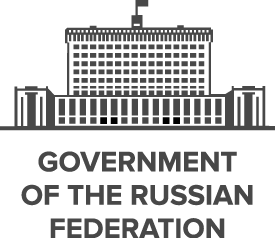Founded in the 12th century, the Principality of Muscovy was able to emerge from over 200 years of Mongol domination (13th-15th centuries) and to gradually conquer and absorb surrounding principalities. In the early 17th century, a new ROMANOV Dynasty continued this policy of expansion across Siberia to the Pacific. Under PETER I (ruled 1682-1725), hegemony was extended to the Baltic Sea and the country was renamed the Russian Empire. During the 19th century, more territorial acquisitions were made in Europe and Asia. Defeat in the Russo-Japanese War of 1904-05 contributed to the Revolution of 1905, which resulted in the formation of a parliament and other reforms. Repeated devastating defeats of the Russian army in World War I led to widespread rioting in the major cities of the Russian Empire and to the overthrow in 1917 of the imperial household. The communists under Vladimir LENIN seized power soon after and formed the USSR. The brutal rule of Iosif STALIN (1928-53) strengthened communist rule and Russian dominance of the Soviet Union at a cost of tens of millions of lives. After defeating Germany in World War II as part of an alliance with the US (1939-1945), the USSR expanded its territory and influence in Eastern Europe and emerged as a global power. The USSR was the principal adversary of the US during the Cold War (1947-1991). The Soviet economy and society stagnated in the decades following Stalin’s rule, until General Secretary Mikhail GORBACHEV (1985-91) introduced glasnost (openness) and perestroika (restructuring) in an attempt to modernize communism, but his initiatives inadvertently released forces that by December 1991 splintered the USSR into Russia and 14 other independent republics.
Following economic and political turmoil during President Boris YELTSIN's term (1991-99), Russia shifted toward a centralized authoritarian state under the leadership of President Vladimir PUTIN (2000-2008, 2012-present) in which the regime seeks to legitimize its rule through managed elections, populist appeals, a foreign policy focused on enhancing the country's geopolitical influence, and commodity-based economic growth. Russia faces a largely subdued rebel movement in Chechnya and some other surrounding regions, although violence still occurs throughout the North Caucasus.
Russia is a semi-presidential federation.
Members:
Resources
Displaying 771 - 775 of 1046Regional Law No. 4-oz “On land charges”.
This Regional Law shall be aimed at the development of land relations and improvement of the mechanism of state regulation of payment of land charges. It establishes that the amount of payment for agricultural land allotted to agricultural enterprises, peasant farms, cooperatives and subsistence farms for agricultural production shall not exceed the amount of taxes applicable to land parcels allotted on lease.
Regional Law No. 41-oz “On soil fertility of agricultural land”.
This Regional Law establishes legal grounds of the relations between landowners, landlords, land tenants (including foreign natural and legal persons land lease holders) and state bodies in the sphere of ensuring soil fertility of agricultural land, and also establishes rights and duties of natural and legal persons performing agricultural production in relation to efficient use of soil fertility. Soil fertility of all types of agricultural land must ensure sufficient conditions for crop growing without oppression of soil organisms.
Regional Law No. 20-5213 “On regional and municipal land-use planning”.
This Regional Law establishes composition and contents of land use planning of urban areas in accordance with territorial planning scheme and documents of territorial planning of municipal units. Land-use planning project shall contain graphic scheme (mapping of boundaries) and textual part. The project shall contain mapping of the boundaries of protected areas, water protection areas and sources of potable water supply.
Regional Law No. 656-KZ “On protected areas”.
This Regional Law regulates relations, originating in the sphere of organization, conservation and protection of protected areas with a view of conservation of unique and typical ecosystems and complexes, wild fauna and wild flora species, and control of changes in the state of biosphere. Protected areas shall be classified as follows: (a) natural parks; (b) nature monuments; (c) dendrological parks and botanical gardens; and (d) healthcare areas and spas.
Regional Law No. 532-KZ “On regulation of land relations”.
This Regional Law establishes that priorities of land policy shall be state regulation of land relations with a view of conservation of precious land, protected areas and agricultural land with a view of conservation of ecosystems and traditional Cossack forms of land tenure. Regional Administration shall be competent in transfer of public land and private and municipal agricultural land to land of other categories. It delimits jurisdictional competence between regional bodies and local government as regards regulation of land relations.


